
Connect, Collaborate, and Create Change – SDGC26 Awaits!
Join us at the Service Design Global Conference 2026 in Germany and online, 28–30 October. SDGC26 Registration is Now Open, Early Bird tickets are on sale.

So you’ve heard of the concept of “adding your pronouns” and want to learn more. Like many of us, you’ve probably wondered what it meant, why folks keep bringing it up, and finally how you should “add your pronouns”? Where? When? Online? Within a verbal introduction?

This article breaks down the how vs. the why behind adding pronouns while touching on a bit of history behind the concept. It will walk you through adding your pronouns across your online identities as well as how to use them in a verbal introduction. If you are still on the fence about adding pronouns, please take a moment to read this article detailing why a person should include pronouns. It explains the high positive impact regarding inclusion, yet low risk, that a cisgender person faces when they add them. To bring in a quote from the author Max Masure (they/them), including your pronouns “normalizes the process, has little risk, and actually makes for a safer environment for everyone.”
Adding pronouns within one’s online profile, email signature, Slack name, Zoom name, and so on is becoming more and more common. Social media sites like LinkedIn and Instagram have even added fields within profile editing to include pronouns more easily. But for the sake of reaching everyone, and being inclusive in this how-to article, let’s say you’re one of the first folks within your community (network, company, whatever) adding pronouns. How do you explain to someone who asks about the addition? Or, even further, wants to understand the value of adding pronouns to their own online identity and introductions? This is what I recently said to another cisgender friend who was uncertain about why we should add pronouns: “Sharing my pronouns is one small way I can help to create a safe space for trans and gender nonconforming folks–by doing this I normalize the usage of pronouns which helps everyone to feel included.”
Conversation around pronouns, particularly gender neutral pronouns, is not new. “Examples of the singular “they” being used to describe someone features as early as 1386 in Geoffrey Chaucer’s The Canterbury Tales and also in famous literary works like Shakespeare’s Hamlet in 1599.” — reports the BBC. And in 1966 the Swedish gender-neutral pronoun hen made its debut, “as an alternative to the masculine han and the feminine hon. Hen didn’t begin to spread until the 1990s, and although it’s far from universal, hen has become common enough in Sweden that it no longer needs to be explained.” Literature, newspapers, and various historic materials reference discussions around pronouns from across the world for hundreds of years.
Learn more through these resources:
Please note: not every language has identified means to speak to pronouns. In English the sharing of pronouns has become quite common. We look forward to continuing to explore what it means to include your pronouns across languages and geographies. Please comment on this article with any information about how you are adding pronouns within your unique context. Hopefully there can be follow-on discussions and articles related to this outside of the English translation.
Alright so let’s get into the details–here are some tangible examples to inspire you to include your pronouns across various mediums, i.e., LinkedIn, Instagram, Slack, Zoom, Email Signature, and the Service Design Network website. Anywhere your name is listed you can include your pronouns! This includes presentation slides, publicity materials for an event you are speaking at, articles written about you… all are appropriate places to include your pronouns.
On LinkedIn — Since 2021, there is a form field specifically to include your pronouns.
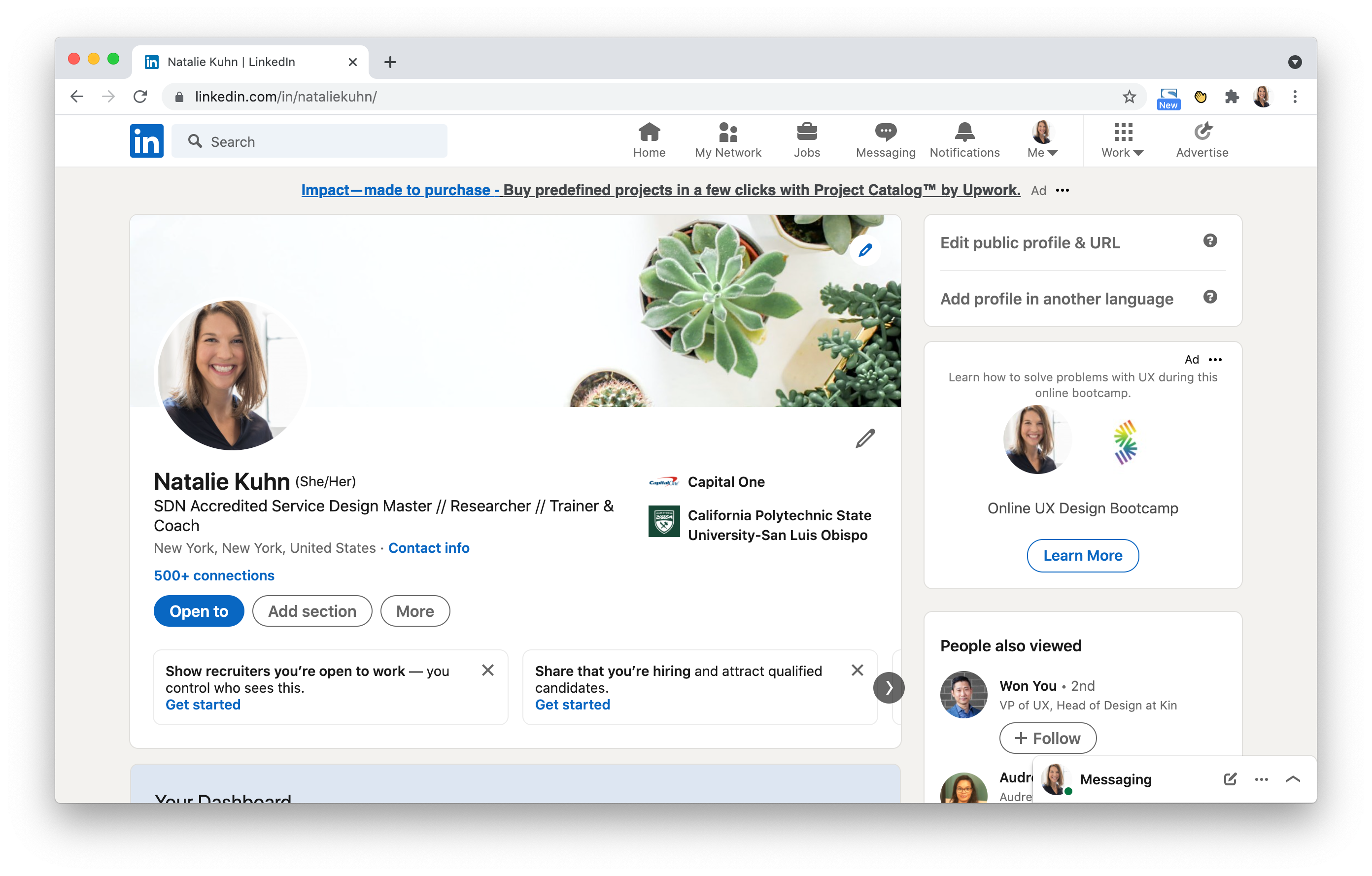
On Instagram — Since 2021, there is a form field specifically to include your pronouns but on mobile only.
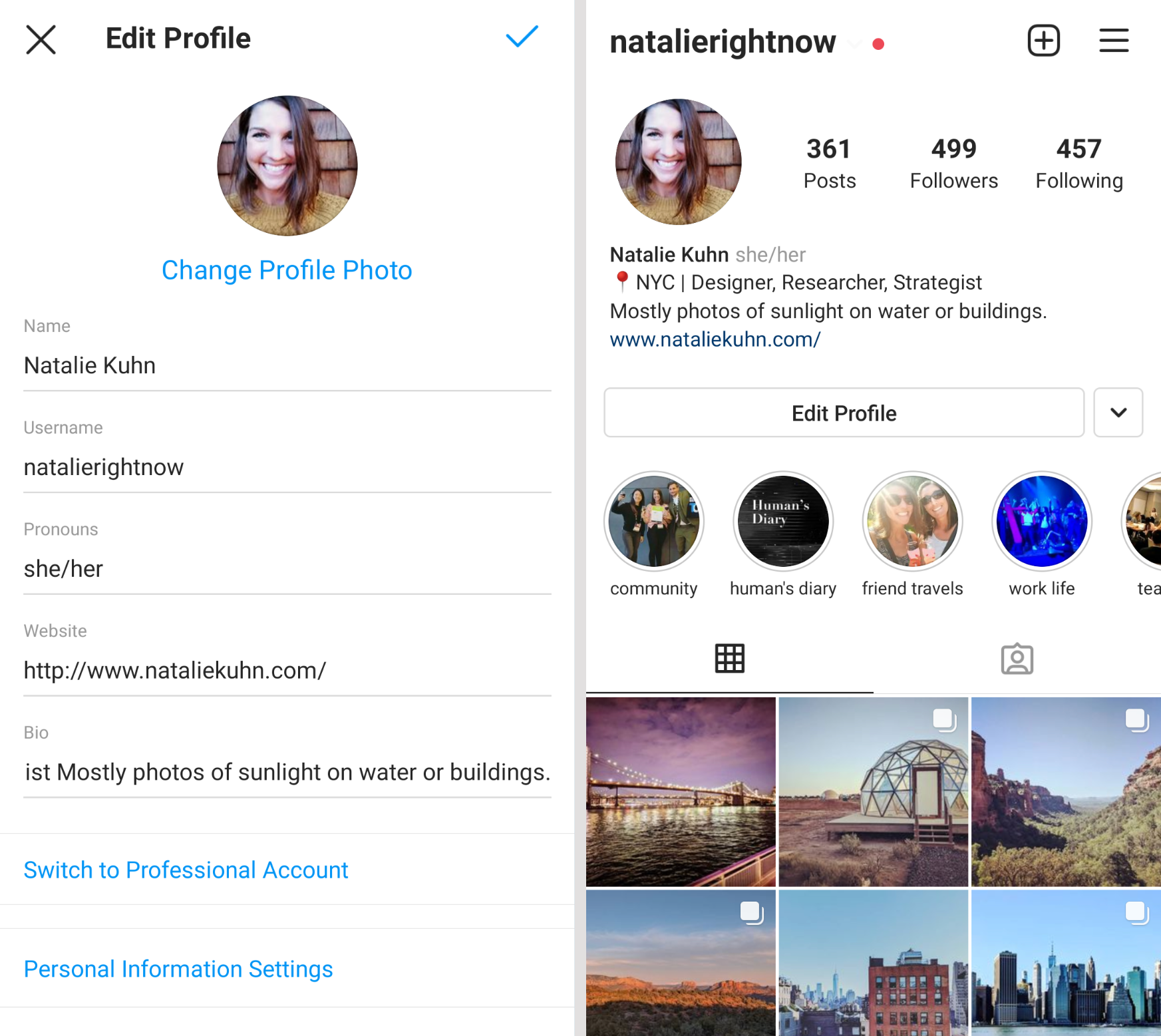
On Slack — there is not a specific field for this but you can just add your pronouns to the end of your name.
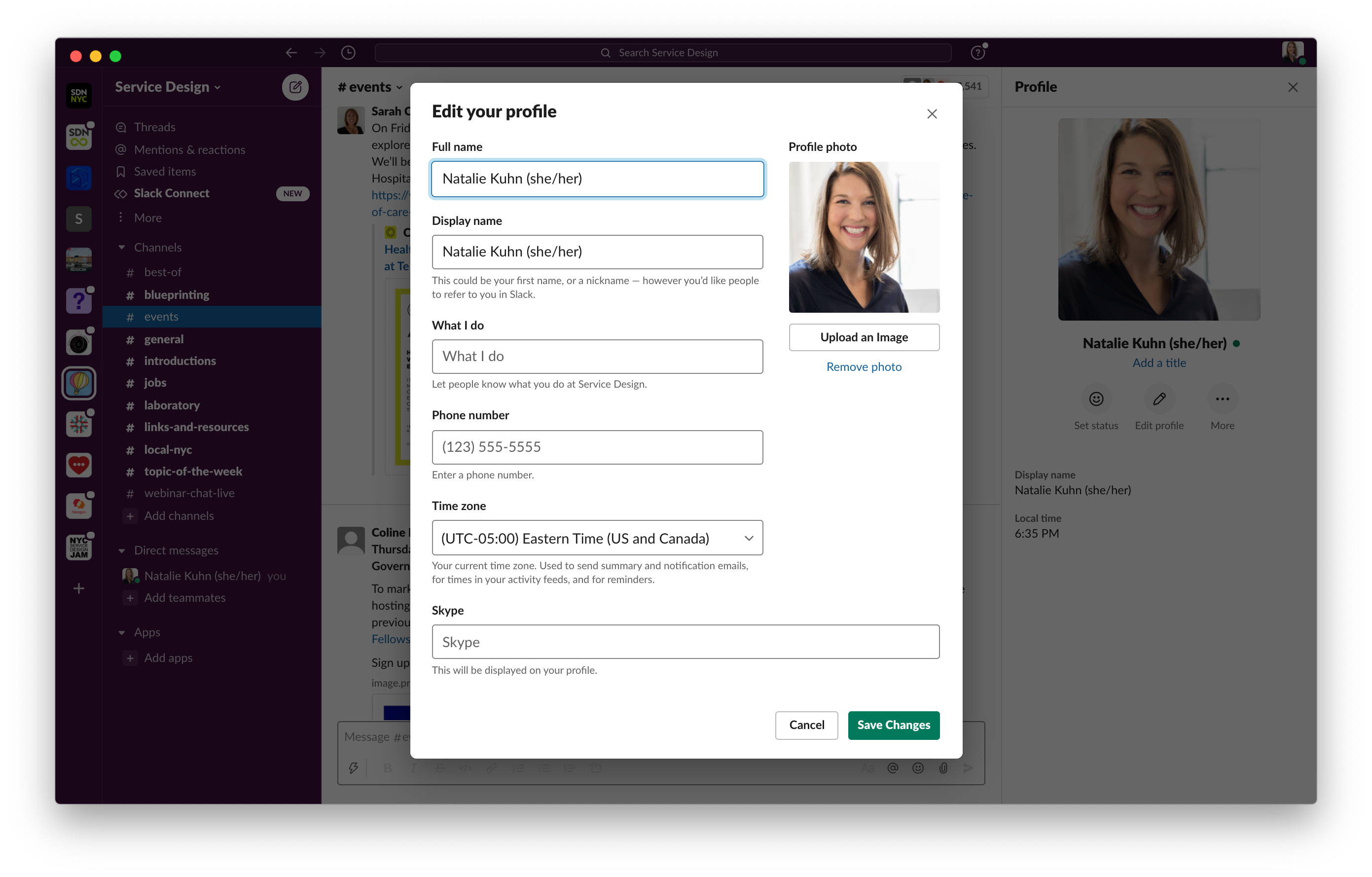
On Zoom — similar to Slack you can just add your pronouns after your name. To include your pronouns permanently you go to Zoom Preferences > Profile > Edit My Profile and then update on the web page you are directed to. Within a meeting, one-off basis, you can select the dropdown over your name in the participant list or the 3 blue dots (not pictured) over your video to “Rename” yourself to include pronouns.
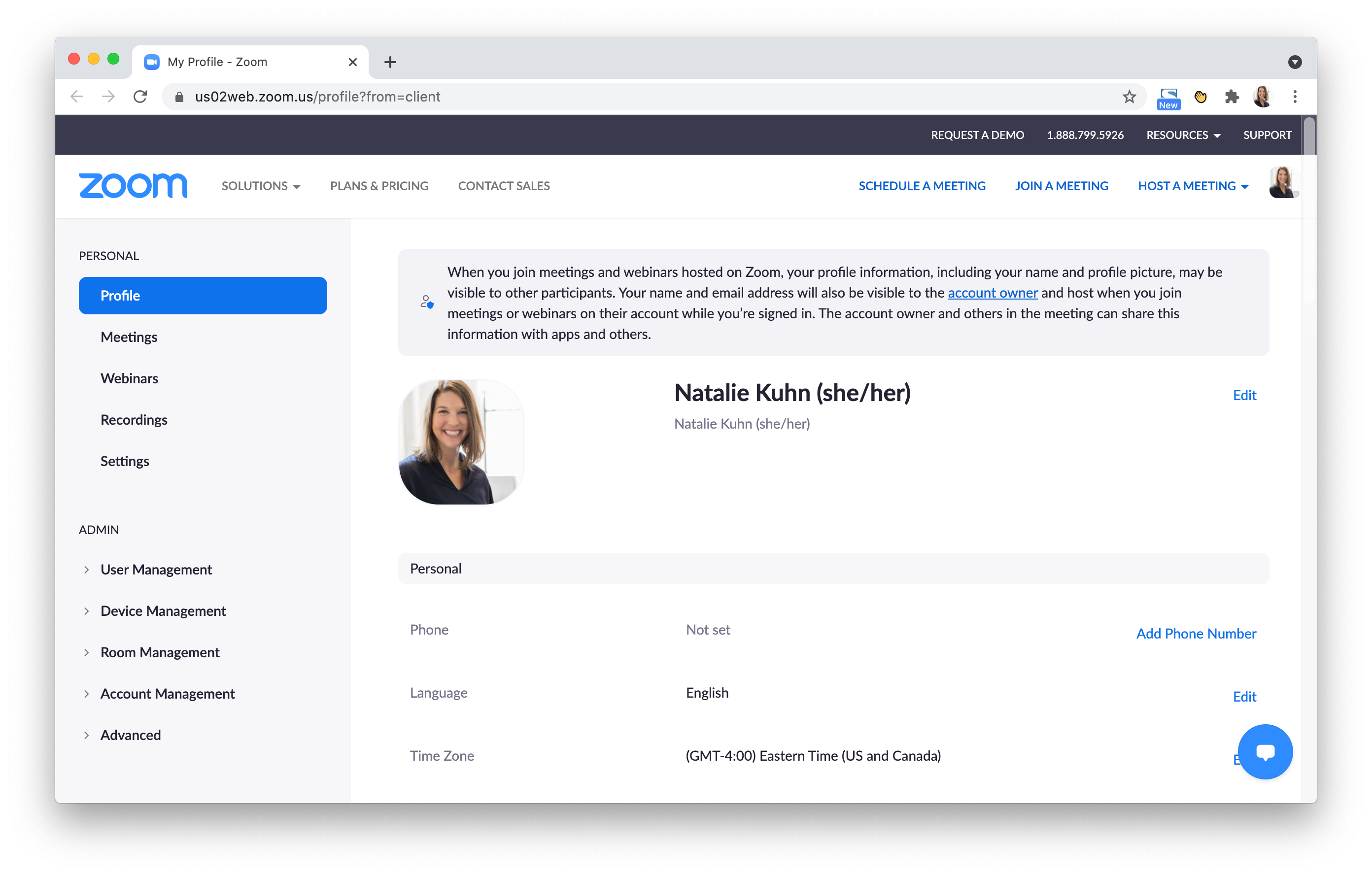


Within an Email Signature — hopefully this is seeming more and more straightforward to you as you review examples. All it takes to include your pronouns is to type them into your signature. For Gmail you go to the Settings Gear Icon > See All Settings > Scroll Down to Signature and edit there. We also recommend adding a link to the article: “Why I Add My Pronouns”
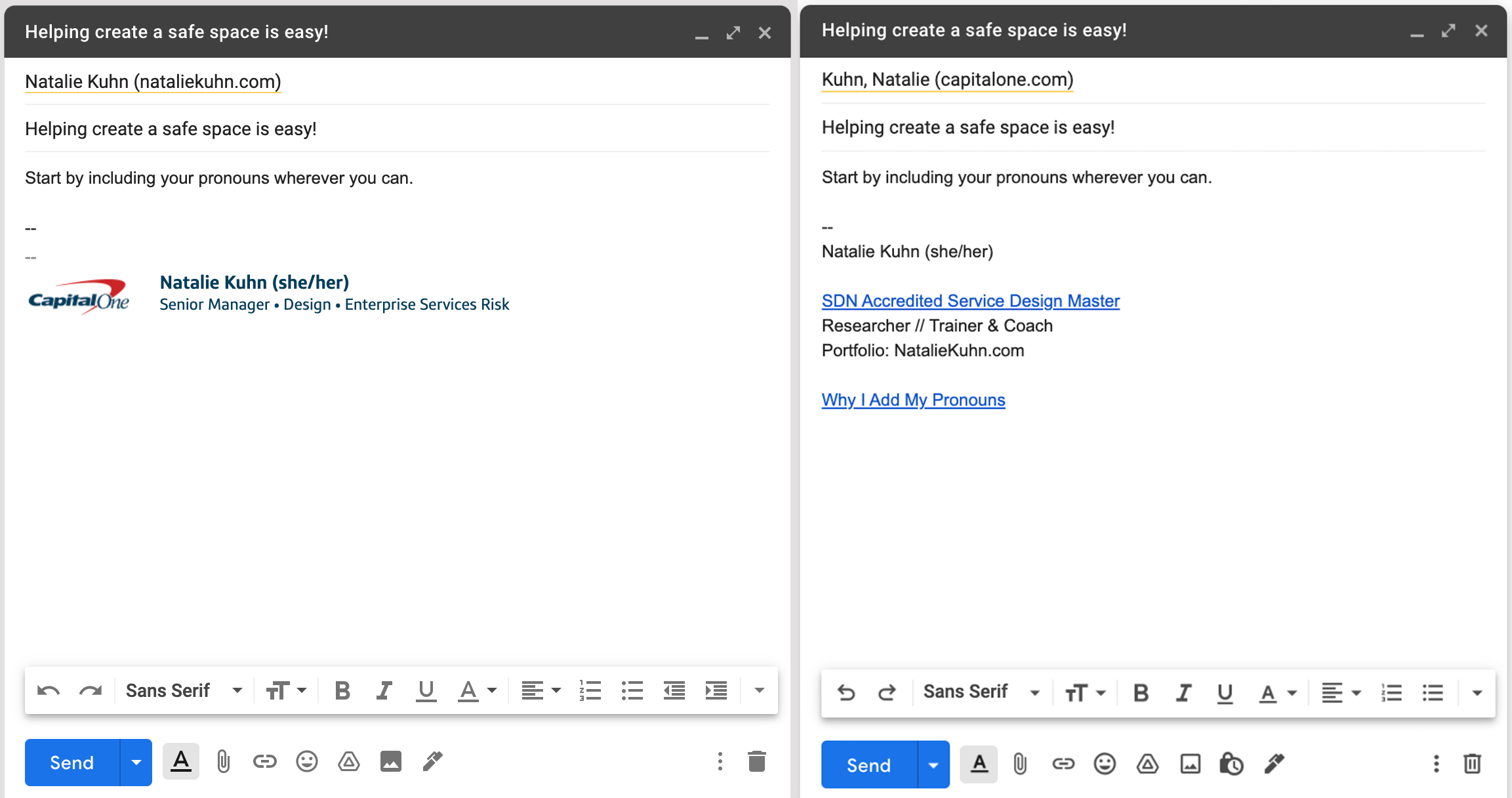
On Any Website — similar to Slack and Zoom, you can just add your pronouns at the end of your last name for them to appear. I have done this on our internal company networking site which I cannot share publicly, but also within my Service Design Network profile where I co-founded the Diversity, Equity, and Inclusion Advisory Board with Max Masure.
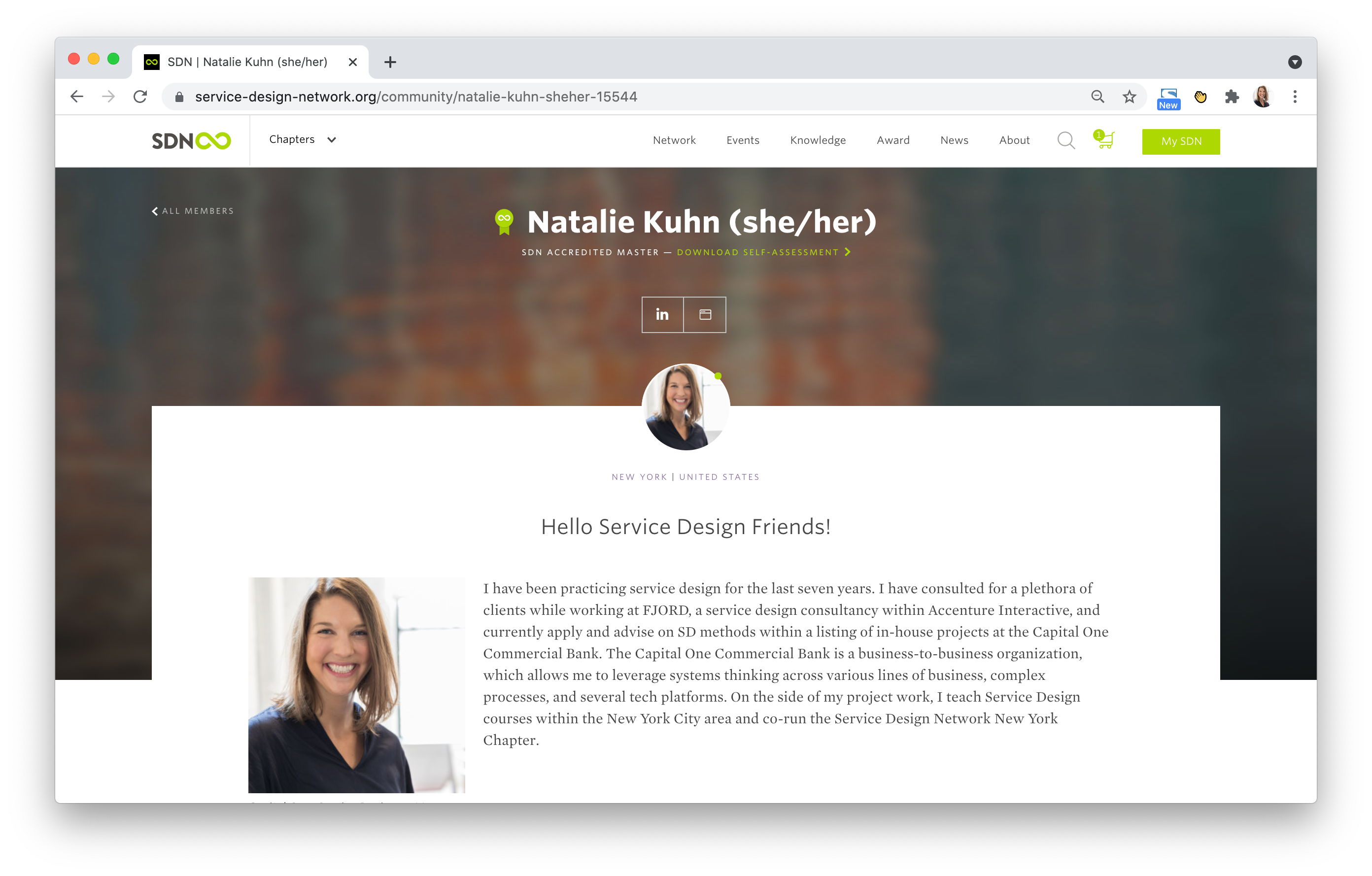
Verbal introductions are as simple as this! When you introduce yourself, in any context, just say your name and your pronouns. It will encourage others to do the same and it creates a trans inclusive space and really positions you as a trans ally. It might feel awkward at first, and it is okay to feel uncomfortable. This is how we grow.

Natalie is a Senior Manager of Service Design who leads the Capital One Enterprise Risk Services design team. Natalie regularly teaches design education courses as well as coaches teams through research, synthesis, strategy, creative concepting, prototyping and product testing. Before Capital One, Natalie worked as a Service Design consultant at FJORD and has spent her career as a designer working with startups, agencies, and service providers to strategically improve their offerings. Natalie is also a Service Design Network (SDN) accredited Service Design Master, a founding member (with Max) of the SDN Diversity, Education, and Inclusion Taskforce, and co-founder of the SDN New York Chapter–they host monthly events open to anyone.

Max is an Ethical UX Researcher, Diversity, Equity and Inclusion Consultant, Author, and Public Speaker. They believe in equity, human-centered design, nature-centered design, community-led initiatives, and the liberation of under-respected communities. They regularly speak on trans inclusion, inner power, ethics, and transformative culture. They recently supported the United Nations in their efforts to improve engagement on their Sustainable Development Goals, trained a global hotel company to better serve their transgender and gender non-conforming customers, and they are currently advising the Service Design Network Organization as a founding member of their Diversity, Education, and Inclusion Taskforce.

Join us at the Service Design Global Conference 2026 in Germany and online, 28–30 October. SDGC26 Registration is Now Open, Early Bird tickets are on sale.

We are pleased to announce that the call for papers for Touchpoint Vol. 17 No. 1 is now open.

Join us at SDGC25 in Dallas and online, this October 15–17. In-person and virtual tickets are available - your invitation to connect, share ideas, and explore service design's impact on business.

We are excited to share the entire recording and the full transcript of this special year-end event hosted by the Service Design Network Switzerland chapter.

Share your thoughts
0 RepliesPlease login to comment